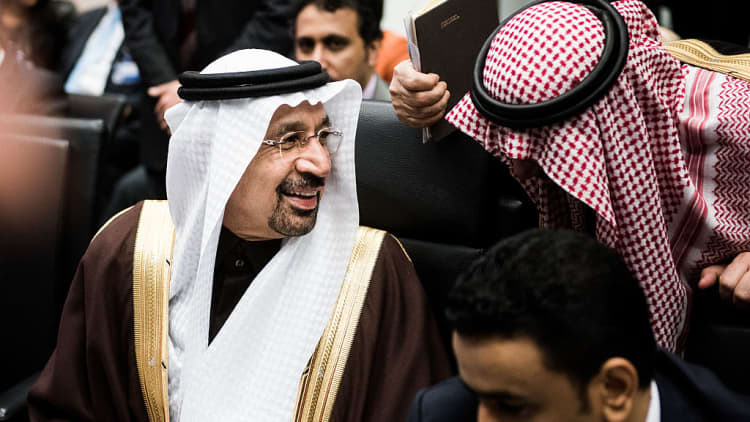Oil prices rose on Monday, but pared earlier gains despite Saudi Arabia's oil minister saying that he expected OPEC and its partners to consider extending their deal to cut supply possibly into next year to end a global glut.
Growing U.S. drilling and production have played a role in undermining the efforts of the Organization of the Petroleum Exporting Countries and non-OPEC producers, such as Russia, to reduce global oil inventories with an output cut of 1.8 million barrels per day (bpd) during the first half the year.
Saudi Energy Minister Khalid al-Falih said oil producers would "do whatever it takes" to rebalance the market and that he expected a global deal on cutting crude output to be extended through all of 2017 and possibly into next year.
News that the curbs may be extended into 2018 fueled a short-lived rally in the market, but oil gave up the gains quickly amid pessimism on how long it will take to drain brimming oil inventories.

Brent crude was rose 27 cents at $49.37 a barrel by 2:36 p.m. (1836 GMT ), having traded as low as $48.48 and as high as $49.92 on Monday. U.S. light crude settled 21 cents higher at $46.43. The contract traded in a band between $45.73 and $46.98.
"The market is getting tired of hearing from OPEC how good they are, how compliant (with supply curbs) they are and especially how all their projections for inventories falling seemed to be moved into the future," said Eugen Weinberg, head of commodity research at Commerzbank.
"Those claims do not withstand the reality check with the inventories staying stubbornly high and non-OPEC production rising strongly."
Russia also said it was discussing prolonging cuts with other producers beyond 2017.
OPEC will review the cuts at a meeting in Vienna on May 25. If the supply curbs are extended, then OPEC will likely struggle to keep its members adhering to the their output targets, Weinberg said.
"Compliance rates, in my opinion, will not be as high as they were in past months."
The Saudi oil minister said recent price falls had been caused by seasonal low demand and refinery maintenance, as well as by non-OPEC production growth, especially in the United States.

U.S. energy companies last week extended a recovery in oil drilling into a 12th month, energy services firm Baker Hughes said on Friday.
Since a low point in May 2016, U.S. producers have added 387 oil rigs, growing about 123 percent, Goldman Sachs said.
U.S. oil production has soared more than 10 percent since mid-2016 to 9.3 million bpd, its highest since August 2015 and close to the levels of top producers Russia and Saudi Arabia.
Many analysts now see U.S. crude output heading toward 10 million bpd over the next year.
"It's all about inventories and U.S. shale versus OPEC," said Hussein Sayed of brokerage FXTM. "OPEC members have no choice but to talk up prices by signaling an extension to the production cuts agreement."
In the week to May 2, investors cut their bullish bets on Brent to the lowest level since late November, while hedge funds and money mangers also cut gross long positions in U.S. crude futures for the second straight week, to the lowest since early November.

